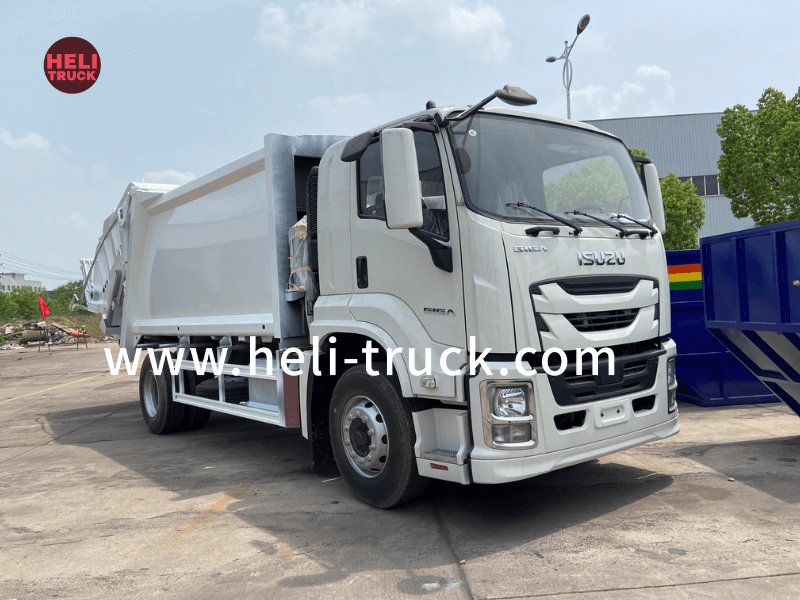Introduction
In the world of excavation, the use of vacuum trucks has revolutionized traditional digging methods. Vacuum truck hydro excavation, in particular, has gained popularity for its efficiency, precision, and environmental friendliness. This comprehensive guide will delve into the details of vacuum truck hydro excavation, exploring its benefits, applications, technology, and best practices.
What is Truck mounted crane specifications ?
Vacuum truck hydro excavation is a method of excavation that combines high-pressure water jetting and vacuum technology to remove soil and debris from the ground. This process involves the use of a specialized vacuum truck equipped with a water tank, water pump, high-pressure water jetting system, and a large vacuum storage tank. The high-pressure water jet is used to break up the soil, while the vacuum system simultaneously removes the loosened material, leaving behind a clean and precise excavation site.
Benefits of Vacuum Truck Hydro Excavation
1. Safety: Vacuum truck hydro excavation is a safe alternative to traditional digging methods, such as mechanical excavation or manual digging. By using pressurized water and vacuum technology, the risk of underground utility strikes and injuries to workers is significantly reduced.
2. Precision: The precise control of the water jetting and vacuum systems allows for accurate excavation in tight spaces and around existing utilities. This level of precision minimizes the risk of damage to underground infrastructure and ensures a clean excavation site.
3. Environmental Friendliness: Vacuum truck hydro excavation is an environmentally friendly method of excavation, as it minimizes soil disturbance and reduces the amount of waste generated during the process. The use of water as a digging medium also eliminates the need for harmful chemicals or pollutants.
4. Efficiency: Vacuum truck hydro excavation is a fast and efficient method of excavation, as it can quickly remove soil and debris without the need for manual labor or heavy machinery. This results in reduced project timelines and lower overall costs.
Applications of Vacuum Truck Hydro Excavation
1. Utility Locating: Vacuum truck hydro excavation is commonly used for locating and exposing underground utilities, such as gas lines, water pipes, and electrical cables. The precision and non-destructive nature of the process make it ideal for utility companies and contractors working in urban areas.
2. Potholing: Vacuum truck hydro excavation is an effective method for creating potholes or test holes to locate buried utilities or assess soil conditions. Potholing is often required before construction projects to ensure the safety of workers and prevent damage to existing infrastructure.
3. Trenching: Vacuum truck hydro excavation can be used for trenching applications, such as installing new utilities or repairing existing pipelines. The precision of the excavation process allows for the creation of narrow trenches with minimal disruption to the surrounding area.
4. Environmental Remediation: Vacuum truck hydro excavation is also used in environmental remediation projects to remove contaminated soil or debris from the ground. The non-destructive nature of the process is ideal for sensitive environmental sites where traditional excavation methods may cause further damage.
Technology Behind Vacuum Truck Hydro Excavation
1. Water Jetting System: The water jetting system of a vacuum truck hydro excavation unit consists of a high-pressure water pump and a series of nozzles that direct a focused stream of water at the excavation site. The water jet breaks up the soil and creates a slurry that can be easily removed by the vacuum system.
2. Vacuum System: The vacuum system of a vacuum truck hydro excavation unit consists of a large storage tank, vacuum pump, and suction hose. The vacuum pump creates a strong suction force that removes the slurry from the excavation site and deposits it into the storage tank for disposal or recycling.
3. Control System: Modern vacuum truck hydro excavation units are equipped with advanced control systems that allow operators to precisely adjust the water pressure, flow rate, and vacuum strength. These controls ensure optimal performance and efficiency during the excavation process.
Best Practices for Vacuum Truck Hydro Excavation
1. Proper Training: It is essential for operators and technicians to receive proper training on the use of vacuum truck hydro excavation equipment and safety procedures. Training should cover equipment operation, maintenance, and emergency protocols to ensure the safety of personnel and the success of the excavation project.

2. Site Preparation: Before beginning a vacuum truck hydro excavation project, it is important to properly prepare the excavation site by marking underground utilities, securing necessary permits, and assessing soil conditions. Site preparation helps to minimize risks and ensure a smooth excavation process.
3. Regular Maintenance: Routine maintenance of vacuum truck hydro excavation equipment is crucial to ensure optimal performance and longevity. Regular inspections, cleaning, and servicing of components such as hoses, nozzles, and filters help prevent downtime and costly repairs.
4. Safety Measures: Safety should always be a top priority during vacuum truck hydro excavation projects. Operators should wear appropriate personal protective equipment, follow safety guidelines, and be aware of potential hazards such as underground utilities, unstable soil, and confined spaces.
Conclusion
Vacuum truck hydro excavation is a versatile and efficient method of excavation that offers numerous benefits over traditional digging methods. Its safety, precision, environmental friendliness, and efficiency make it an ideal choice for a wide range of excavation applications. By understanding the technology behind vacuum truck hydro excavation and following best practices, operators can maximize the success of their projects and achieve superior results.
